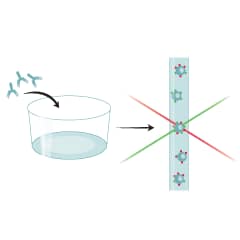CellXVivo Mouse Th17 Cell Differentiation Kit
R&D Systems, part of Bio-Techne | Catalog # CDK017

Key Product Details
Assay Procedure
Refer to the product datasheet for complete product details.
Briefly, CD4+ T cells isolated from mouse splenocytes are differentiated ex vivo into the Th17 phenotype with reagents provided in the CellXVivo™ Mouse Th17 Cell Differentiation Kit using the following procedure:
- Isolate CD4+ T cells from mouse splenocytes
- Culture CD4+ T cells in reagents provided in kit
- Verify Th17 cell expansion after 5 days in culture
Reagents Supplied in the CellXVivo™ Mouse Th17 Cell Differentiation Kit (Catalog # CDK017):
- Hamster Anti-Mouse CD3
- Rat Anti-Mouse CD28
- Mouse Th17 Reagent 1
- Mouse Th17 Reagent 2
- Mouse Th17 Reagent 3
- Mouse Th17 Reagent 4
- Mouse Th17 Reagent 5
- Reconstitution Buffer 1
- Reconstitution Buffer 2
- Reconstitution Buffer 3
- 20X Wash Buffer
Reagents
- Laboratory mice
- XVIVO™ 15 Chemically Defined, Serum-free Hematopoietic Cell Medium (Lonza, or equivalent)
- MagCellect™ Mouse Naïve CD4+ T Cell Isolation Kit (R&D Systems, Catalog # MAGH115, or equivalent)
- Penicillin/Streptomycin (optional)
- Cell Activation Cocktail 500X (Tocris®, Catalog # 5476)
Equipment
- Tissue culture plates and/or flasks
- Sterile deionized water
- Pipettes and pipette tips
- Inverted microscope
- Hemocytometer
- 37 °C, 5% CO2 incubator
- Centrifuge
Note: Results may vary due to strain, age, and/or the health of the mice used for isolation.
Coat the desired tissue culture plate or flask with Hamster Anti-Mouse CD3 antibody.

Isolate mouse splenocytes.

Perform a cell count.

Perform a cell count.

Suspend 1 x 106 naïve CD4+ T cells/mL in Mouse Th17 Differentiation Media. Culture the cells on plates or flask pre-coated with Hamster Anti-Mouse CD3 antibody.

Refresh with Mouse Th17 Differentiation Media on day 3. Culture for 2 more days.

Verify Th17 cell differentiation by analyzing cytokine expression via flow cytometry or ELISA (optional).



